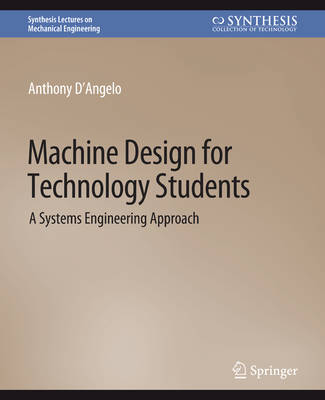
- Afhalen na 1 uur in een winkel met voorraad
- Gratis thuislevering in België vanaf € 30
- Ruim aanbod met 7 miljoen producten
- Afhalen na 1 uur in een winkel met voorraad
- Gratis thuislevering in België vanaf € 30
- Ruim aanbod met 7 miljoen producten
€ 91,95
+ 183 punten
Omschrijving
This book is intended for students taking a Machine Design course leading to a Mechanical Engineering Technology degree. It can be adapted to a Machine Design course for Mechanical Engineering students or used as a reference for adopting systems engineering into a design course. The book introduces the fundamentals of systems engineering, the concept of synthesis, and the basics of trade-off studies. It covers the use of a functional flow block diagram to transform design requirements into the design space to identify all success modes. The book discusses fundamental stress analysis for structures under axial, torsional, or bending loads. In addition, the book discusses the development of analyzing shafts under combined loads by using Mohr's circle and failure mode criterion. Chapter 3 provides an overview of fatigue and the process to develop the shaft-sizing equations under dynamic loading conditions. Chapter 4 discusses power equations and the nomenclature and stress analysis for spur and straight bevel gears and equations for analyzing gear trains. Other machine component topics include derivation of the disc clutch and its relationship to compression springs, derivation of the flat belt equations, roller and ball bearing life equations, roller chains, and keyways. Chapter 5 introduces the area of computational machine design and provides codes for developing simple and powerful computational methods to solve: cross product required to calculate the torques and bending moments on shafts, 1D stress analysis, reaction loads on support bearings, Mohr's circle, shaft sizing under dynamic loading, and cone clutch. The final chapter shows how to integrate Systems Engineering into machine design for a capstone project as a project-based collaborative design methodology. The chapter shows how each design requirement is transformed through the design space to identify the proper engineering equations.
Specificaties
Betrokkenen
- Auteur(s):
- Uitgeverij:
Inhoud
- Aantal bladzijden:
- 113
- Taal:
- Engels
- Reeks:
Eigenschappen
- Productcode (EAN):
- 9783031796845
- Verschijningsdatum:
- 26/10/2020
- Uitvoering:
- Paperback
- Formaat:
- Trade paperback (VS)
- Afmetingen:
- 190 mm x 235 mm
- Gewicht:
- 231 g

Alleen bij Standaard Boekhandel
+ 183 punten op je klantenkaart van Standaard Boekhandel
Beoordelingen
We publiceren alleen reviews die voldoen aan de voorwaarden voor reviews. Bekijk onze voorwaarden voor reviews.











